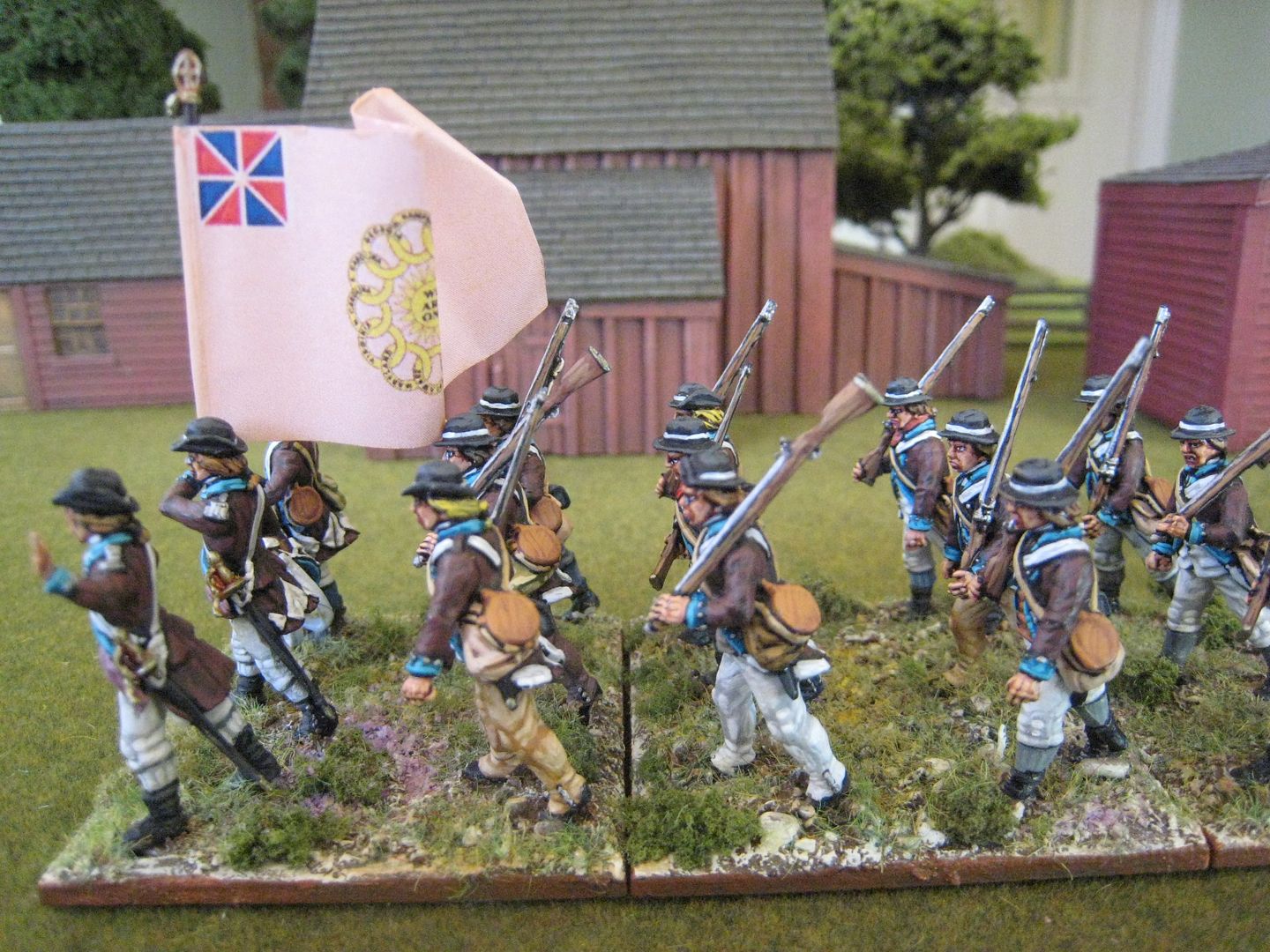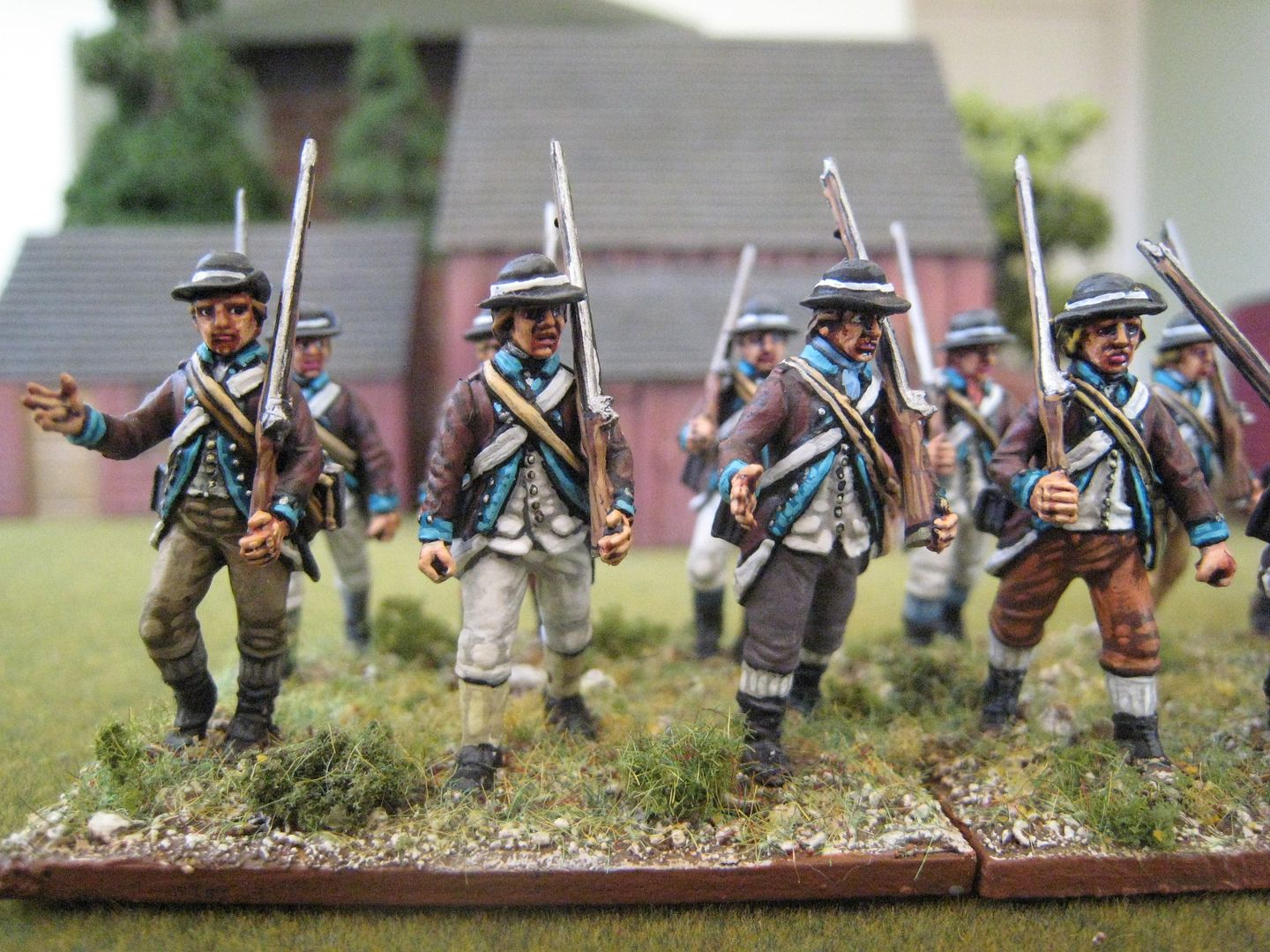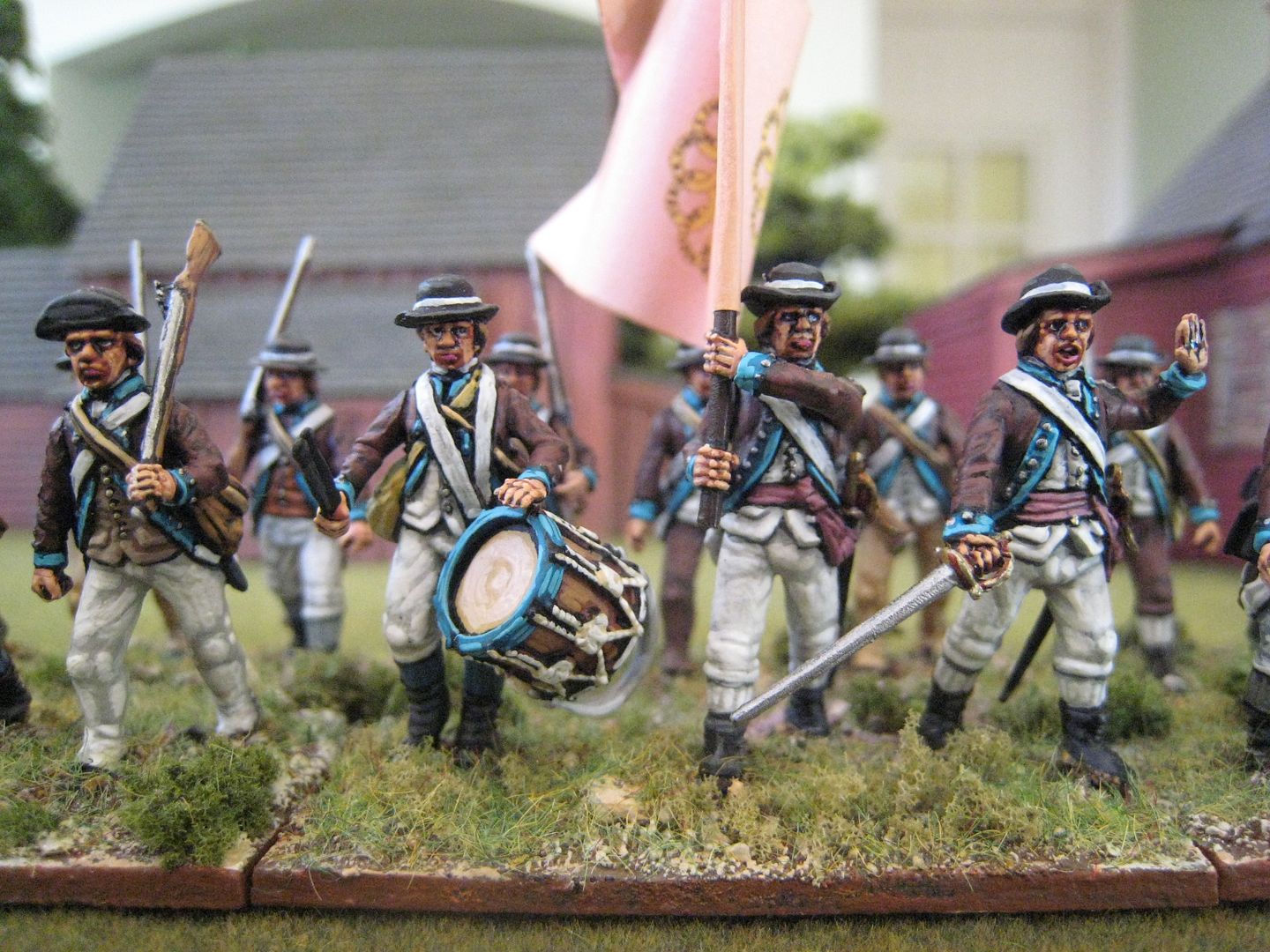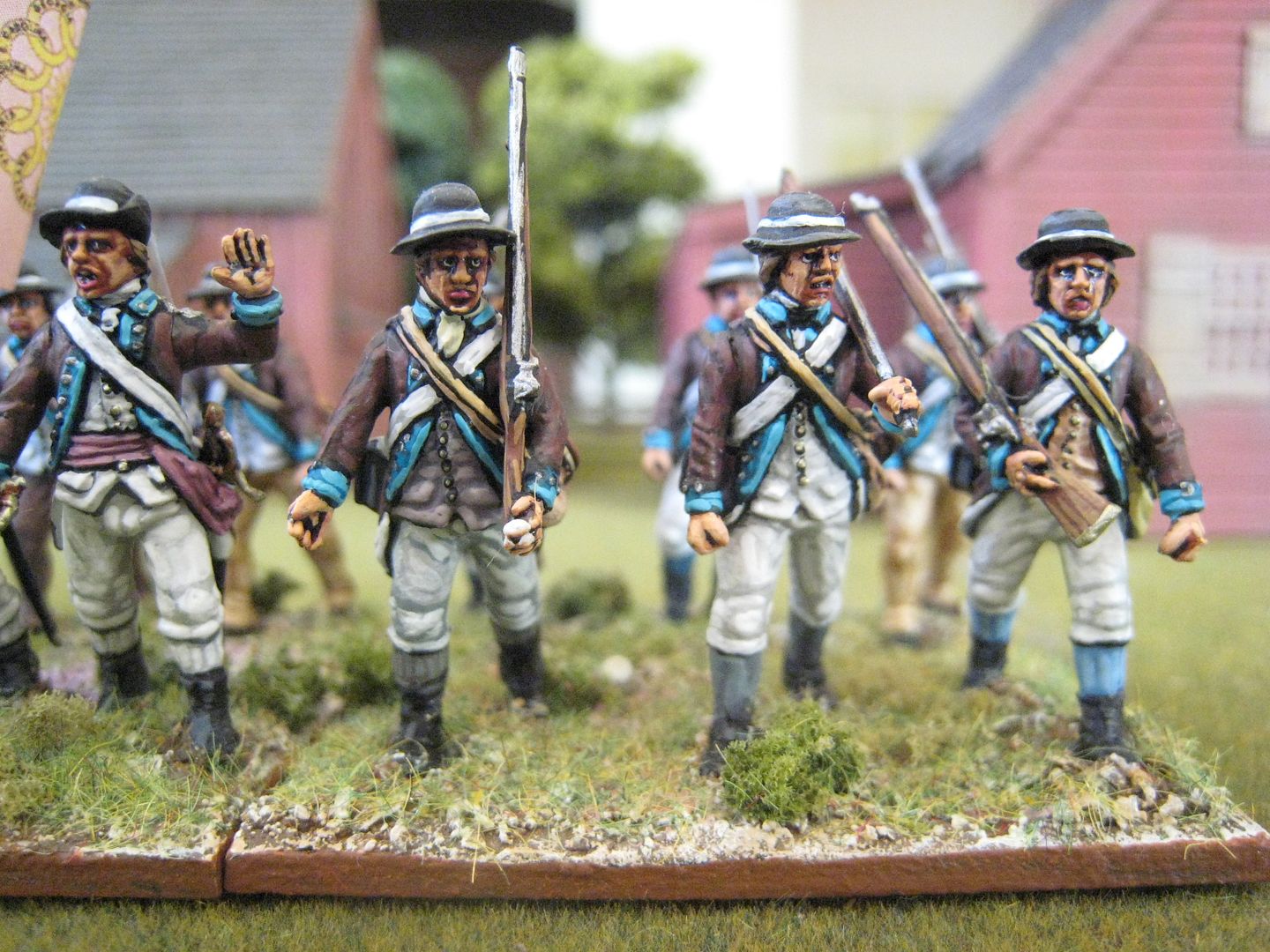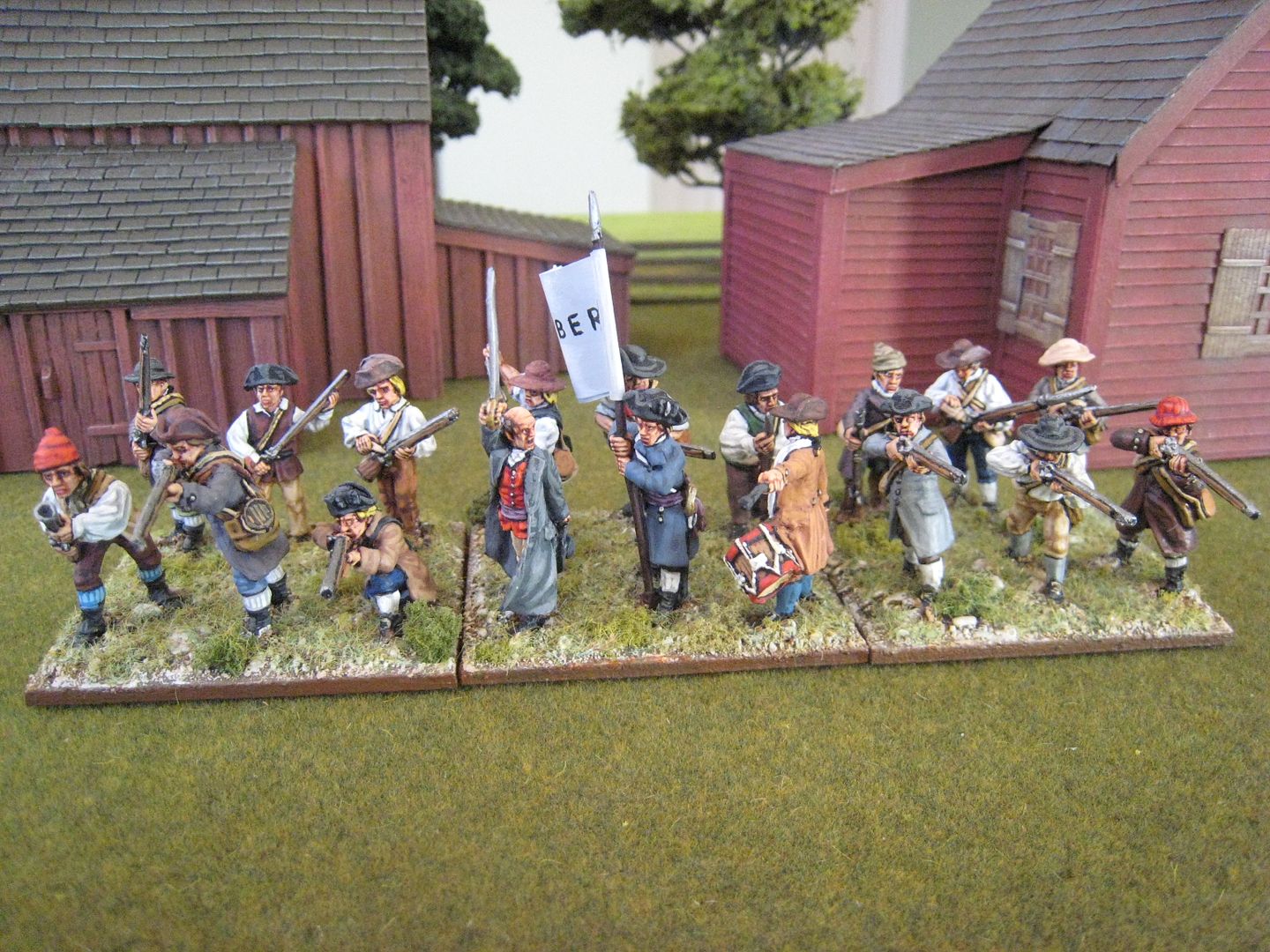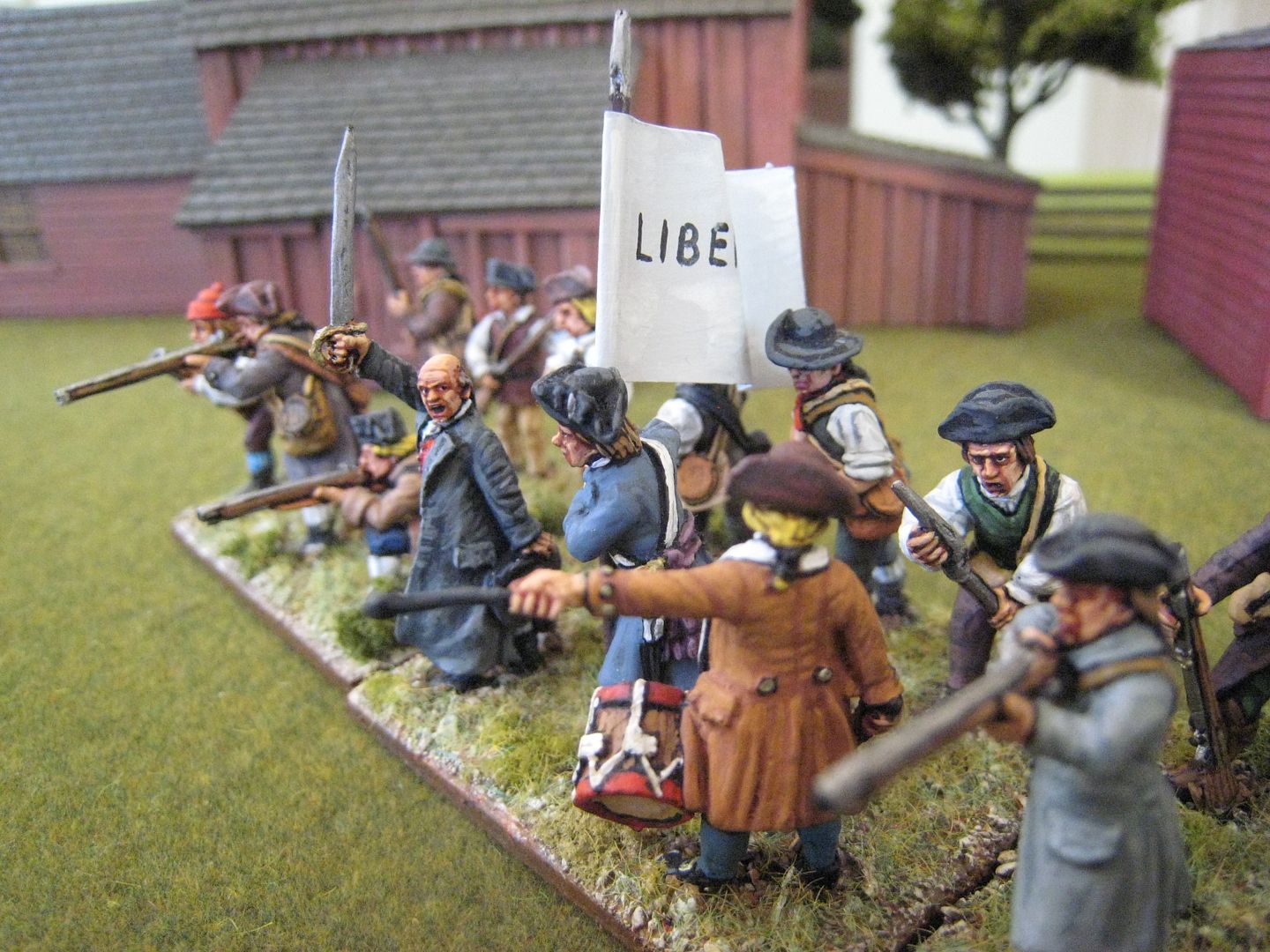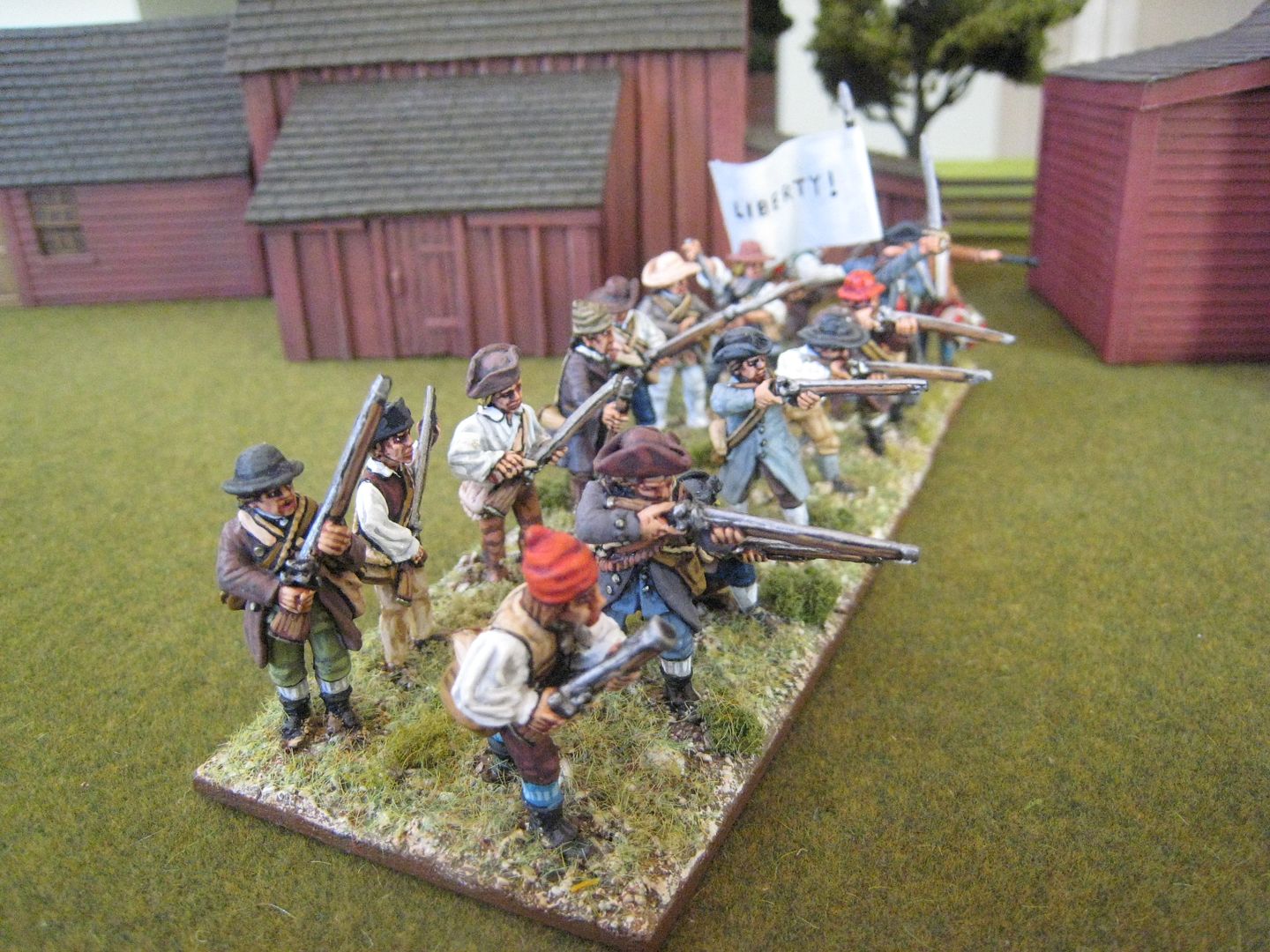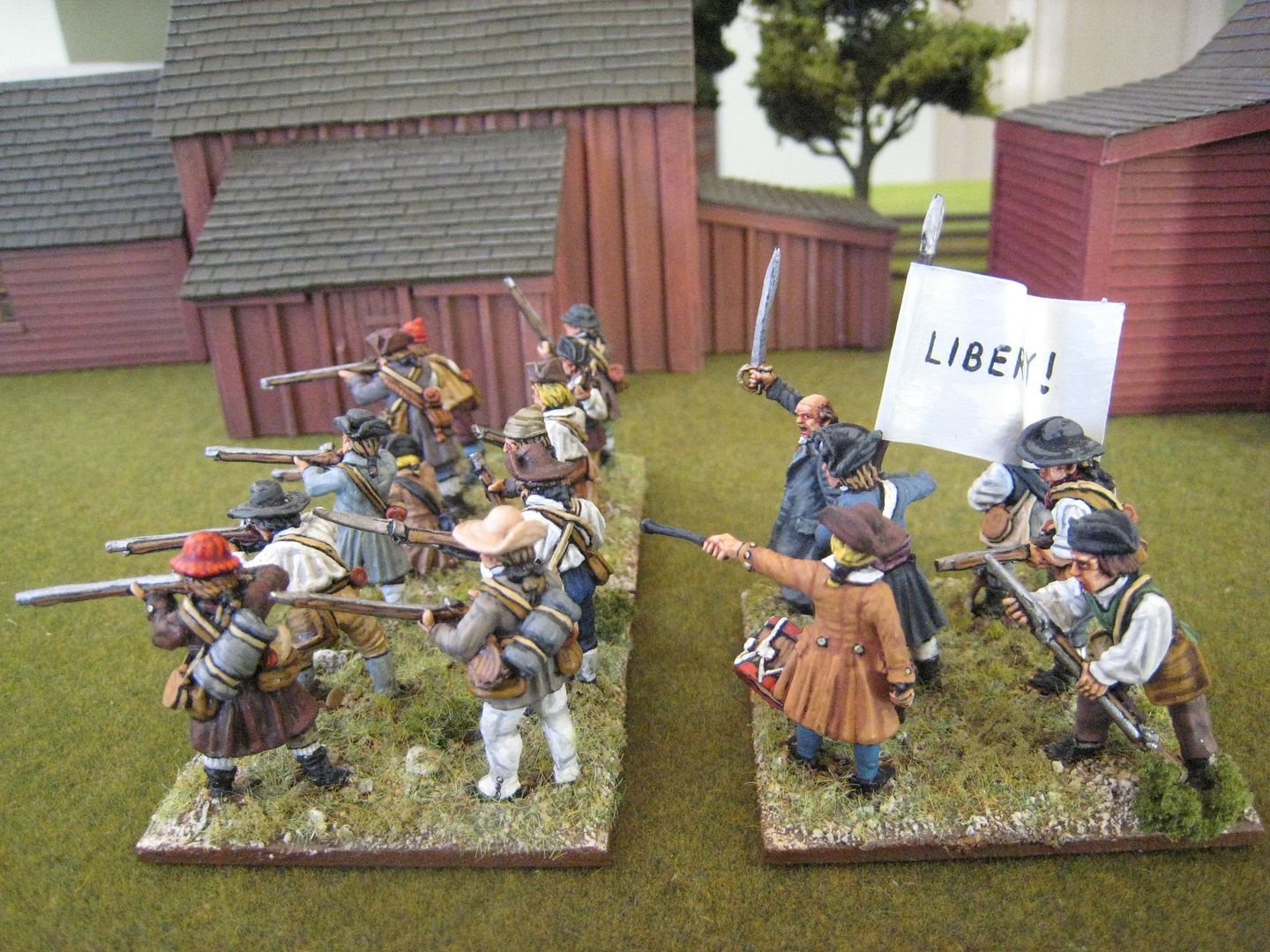I was inspired by the Don Troiani painting of this regiment, which showed the brown coats with sea-green facings. I knew nothing of the regiment but was drawn to the brown faced blue-green facings. The round hats suggested that this would be a good unit with which to start on my Perry plastic Continental Infantry sets. The facings were painted with Foundry's "Teal Blue 24" palette and the coats with "Bay Brown 42". I wanted to have some variation in the colour of the breeches and stockings. The flag design is taken from an image I found on the internet, attributed to the regiment. I have never seen a flag with this design, but it's different and somehow the pink/peach colour of the flag goes quite well with the green/brown look of the regimental coats. Another point to note is that this is the first unit I've painted and then not varnished. This is largely an experiment - I had noticed that the varnishes I was using dulled the colours and in particular took the edge off the faces. No doubt some readers will think the latter is a good thing, as the unvarnished faces here do look a little shiny, as a result of the brown ink washes I use. I'm not sure I'd leave metals unvarnished, but I think these plastic figures may have benefitted from it.
As noted above, I don't have much information on this regiment's battle history and it doesn't appear in any of the published "British Grenadier!"/Caliver scenario books. Plenty of Massachusetts regiments do, however, and so I would ensivage uses these figures when something more specific is lacking - for example, the Princeton scenario has two 12-figure units of "combined Massachusetts regiments". I'm surprised to see that it has been 4 years since my last unit of regular American infantry. But these figures were fun to paint and in uniform colour and pose are quite different to anything else I have in my collection. I finished painting the figures in August but then got stuck on the flag for a while until I found the online example.
24 figures. Painted July/August 2014.

